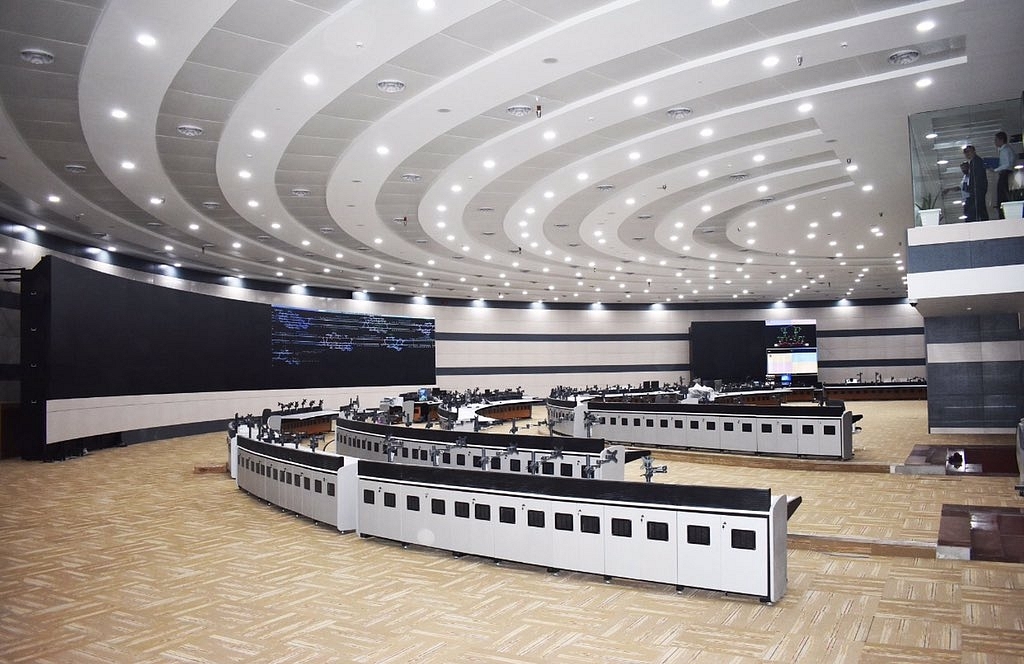News Brief
World’s Second Largest Control Centre Comes Up For 1,856-Km-Long Eastern Dedicated Freight Corridor: Here’s All You Should Know

The world’s second largest Operation Control Centre (OCS) in Prayagraj, Uttar Pradesh (Source: @dfccil_india/Twitter)
The world’s second largest Operation Control Centre (OCS) for trains to carry goods is all set to be inaugurated by the end of this month by Prime Minister Narendra Modi.
Built at Prayagraj in Uttar Pradesh, the centre will be the ‘nerve-centre’ of the eastern dedicated freight corridor.
The eastern dedicated freight corridor is approximately 1,800 km-long, running from Ludhiana in Punjab to Dankuni near Kolkata, passing through Haryana, Uttar Pradesh, Bihar and Jharkhand. The corridor is targeted to be completed by December 2021.
“It will connect the existing ports and industrial areas for faster movement of goods… and will help increase the rail share in freight transportation from the existing 30 per cent to 45 per cent,” MD of the Dedicated Freight Corridor Corporation of India (DFCCIL), Anurag Sachan was quoted as saying by The Hindu.
DFCCIL is a public sector undertaking corporation run by Ministry of Railways.
As per Sachan, once operational, the corridor will not only decongest the existing railway lines, but also increase the average speed of goods trains from current 25 kilometre per hour (kmph) to 70 kmph.
The Operational Control Centre is built by DFCCIL, and its theatre which spans over 1560 sq m has a video wall of more than 90 m length. It will act as a one-stop centre for controlling and monitoring trains, including railway systems as well as the power supply.
Train operation control system is an important component that ensures train safety and efficient operation.
The basic requirement is to enable all elements of the system to work together smoothly under a specified plan (train diagram and work schedule). High efficiency can be achieved by proper planning as trains run on specific orbits, especially with the use of high-end technology.
This planning takes several factors into account — for example, traffic demand, seasonal surge or dip, number of locomotives, drivers on duty et cetera.
In the case when train operations get affected by accidents or natural disasters, it is also possible for the control system to deploy all of its elements to change the plan accordingly so that there is minimal disruption.
Reportedly, the OCC control room will be manned by a 250-strong staff in each shift. A visitor’s gallery has also been constructed in the control room from where one can witness the control room’s functioning on five huge LED screens.
The western dedicated corridor is expected to have a similar operation control system at Ahmedabad, Gujarat.
Currently, 60 per cent of India’s freight is carried by road, a figure which is increasing.
On the other hand, Indian Railways’ freight traffic has drastically fallen over the years. In 1950s, the Indian Railways had a 86 per cent freight share in the country, which has now fallen to 36 per cent.
In general, rail transport is more fuel-efficient than other means of transportation, especially in the case of long haul, heavy volume cargo. Also, since trains burn less fuel per tonne-mile than trucks, shipping via the former is more environment-friendly.
With the dedicated freight corridors, Indian Railways hopes to win back the freight traffic.
Apart from the Eastern Dedicated Freight Corridor and the Western Dedicated Freight Corridor, the Indian Railways has planned four more in the future.
A 2,000-km East-West Corridor will pass through Maharashtra, Madhya Pradesh, Chhattisgarh, Odisha, and West Bengal.
A North-South corridor, with a route length of 2,173 kilometres, will intersect Delhi, Uttar Pradesh, Madhya Pradesh, Maharashtra, Telangana, Andhra Pradesh, terminating in Chennai, Tamil Nadu.
An East-East corridor, running along the eastern seaboard with a route length of 1,100 kilometres has also been announced. It will start in West Bengal, pass through Odisha, Andhra Pradesh, and terminate in Chennai.
Finally, A South-South Corridor, starting from Chennai, will pass through Andhra Pradesh and Karnataka, and will terminate in Goa.
Introducing ElectionsHQ + 50 Ground Reports Project
The 2024 elections might seem easy to guess, but there are some important questions that shouldn't be missed.
Do freebies still sway voters? Do people prioritise infrastructure when voting? How will Punjab vote?
The answers to these questions provide great insights into where we, as a country, are headed in the years to come.
Swarajya is starting a project with an aim to do 50 solid ground stories and a smart commentary service on WhatsApp, a one-of-a-kind. We'd love your support during this election season.
Click below to contribute.
Latest